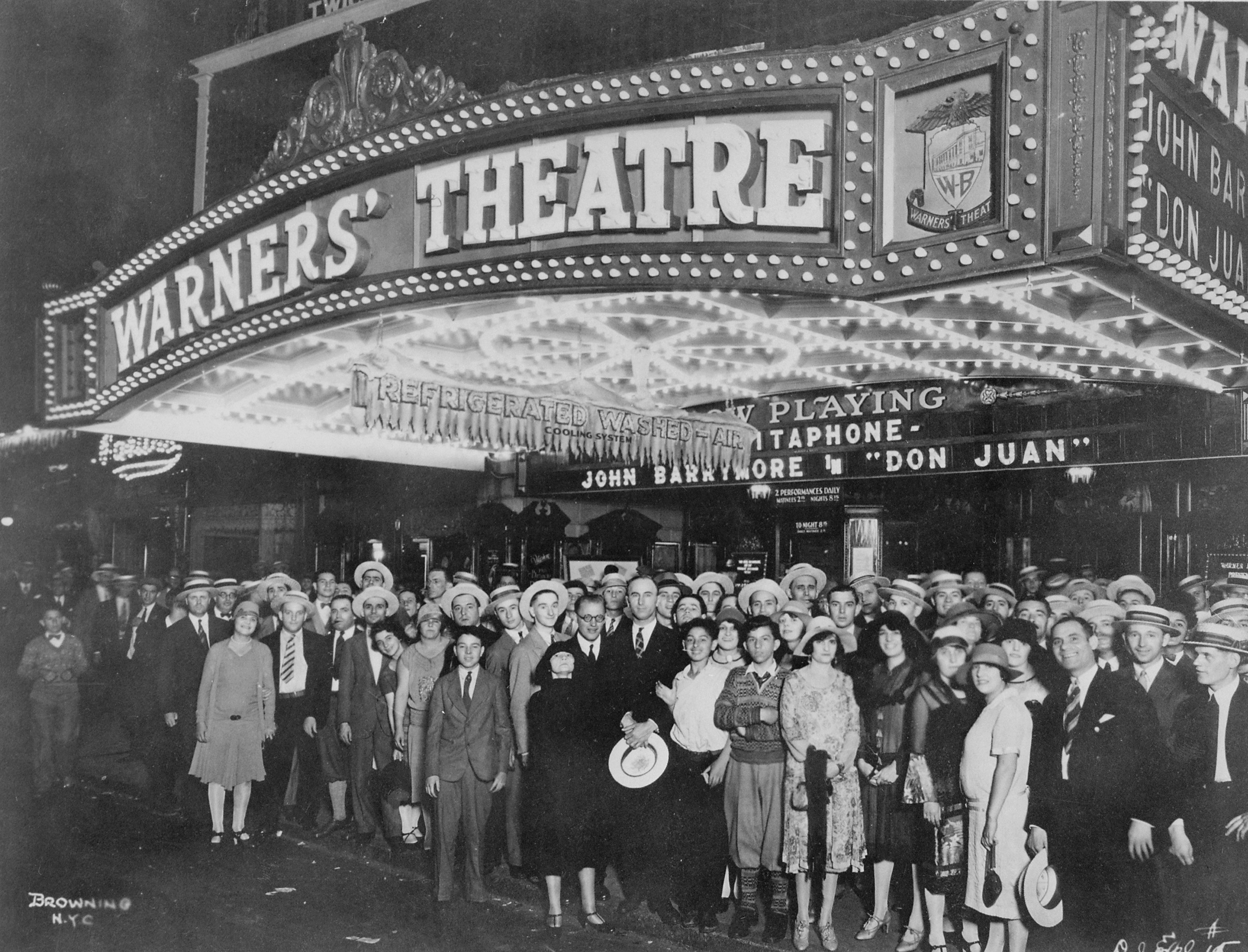
The era of sound: From silent films to talkies
With artificial intelligence currently making waves in the film industry and poised to shape the future of cinema, it's an opportune moment to reflect on a past era of significant transformation — the transition from silent films to the era of sound.
The transition from silent films to talkies in the mid 1920s wasn’t overnight and it was a major development that revolutionised Hollywood.
One crucial invention was the Vitaphone, a sound-on-disc system which created synchronised playback through a vinyl disc manually linked to a film projector. The Bell Telephone Company and Western Electric developed the system. When the system was first pitched, it was rejected as it was deemed too expensive. However, by 1925, Warner Brothers used the Vitaphone in their films ‘Don Juan’ in 1926 and ‘The Jazz Singer’ in 1927.
The Vitaphone faced some challenges though. For example, there were many complex synchronisation problems and issues with re-recording and editing. Because of these issues, many alternatives came from big studios and people outside of Thomas Edison's control, such as the Movietone and Photophone.
Developments like the Movietone went from disc-on sound systems to optical sound on film.
This meant the sound was no longer captured on a disc and was now recorded on transparent film. The methods of the Movietone ensured synchronisation with the images, something Vitaphone was unable to guarantee.
The rise of the talkie
The rise of the talkie changed many things in the film industry, from how they were recorded to the cinemas themselves. At the time, most films were accompanied by a live orchestra; theatres didn’t have the equipment to show sound-projected films, and so had to begin rewiring to meet demand. Plus, the orchestras were no longer needed, so in the transition to the talkies, roughly 20,000 musicians lost their jobs.
Productions also had massive changes on set. Actors had to be less dynamic in their movements during a scene as early microphones were stationary, and many pieces of equipment had to be fitted with soundproofing devices so no sound could be heard during filming. Directors also had to start using multiple camera layouts due to the actors' lack of movement to get various shots.
Yet, the most significant change was for the actors. Acting in the silent era was more physical and exaggerated to compensate for the lack of dialogue, with sound and the change in things, such as having less movement, made talkies seem more limited and stiffer. Many actors couldn’t get used to being so still or using their voices less exaggeratedly, forcing many like Constance Talmadge to eventually retire.
Others’ voices didn’t fit with the characters they played, which affected many actors with thick accents. Sometimes, an actor didn’t make it in the talkie era due to bad scripts and studio politics like Louis. B. Mayer (head of MGM) and actor John Gilbert fight, leading to Mayer changing Gilbert's voice and ruining the actor's career.
Many actors at the time disliked talkies. Charlie Chaplin, one of the biggest silent era stars, once said:
I give the talkies six months more. At the most a year. Then they're done.
As people look back to history and how a film is now, Charlie Chaplin was wrong. Many audiences loved sound-based movies, feeling like they were more real and flocked to the cinema, although some felt like edits were more visible and felt more aware of the processes, so films lost some magic, or it took away the audience's ability to figure the film out for themselves.
 Don Juan opening at Warners' Theatre © Wikipedia
Don Juan opening at Warners' Theatre © WikipediaThe effects of sound on the scripts
Sound also affected scriptwriting as now writers had to add dialogue to films, which could mean you got funky speeches that could’ve been career-ending whilst enabling for more complicated plots and greater development of conflicts, stakes, and character as certain things could be explained more quickly to the audience if needed, or characters could interact more deeply. Iit gave the films more depth and greater, expansive drama enabling them to take the edge over their silent predecessors.
This historical transformation underscores the enduring adaptability of the film industry and its ability to embrace innovation, much like the current wave of artificial intelligence, which promises to continue shaping the future of cinema.
To delve deeper in the world of cinema as an Art de Vivre subscriber, explore cinema's most spine-chilling costumes.
